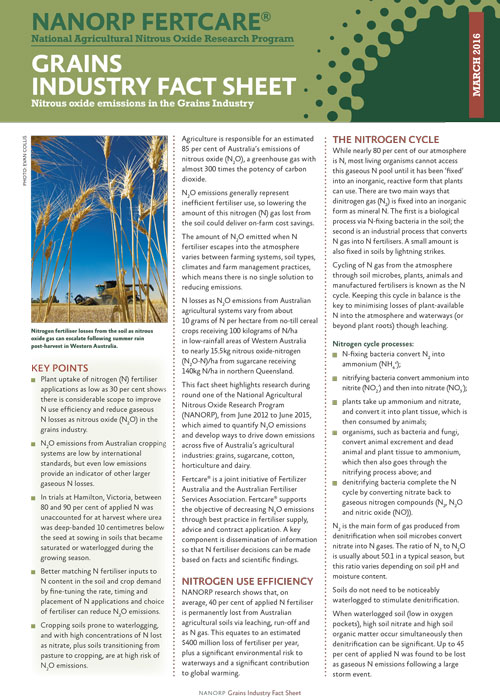Nitrous oxide emissions in the Grains Industry: Nitrogen fertiliser losses from soil
Nitrous oxide emissions in the Grains Industry: Nitrogen fertiliser losses from soil
Published: 30 Jun 2016

Key Points
- Plant uptake of nitrogen (N) fertiliser applications as low as 30 per cent shows there is considerable scope to improve N use efficiency and reduce gaseous N losses as nitrous oxide (N2O) in the grains industry.
- N2O emissions from Australian cropping systems are low by international standards, but even low emissions provide an indicator of other larger gaseous N losses.
- In trials at Hamilton, Victoria, between 80 and 90 per cent of applied N was unaccounted for at harvest where urea was deep-banded 10 centimetres below the seed at sowing in soils that became saturated or waterlogged during the growing season.
- Better matching N fertiliser inputs to N content in the soil and crop demand by fine-tuning the rate, timing and placement of N applications and choice of fertiliser can reduce N2O emissions.
- Cropping soils prone to waterlogging, and with high concentrations of N lost as nitrate, plus soils transitioning from pasture to cropping, are at high risk of N2O emissions.
Region National
Region: National
